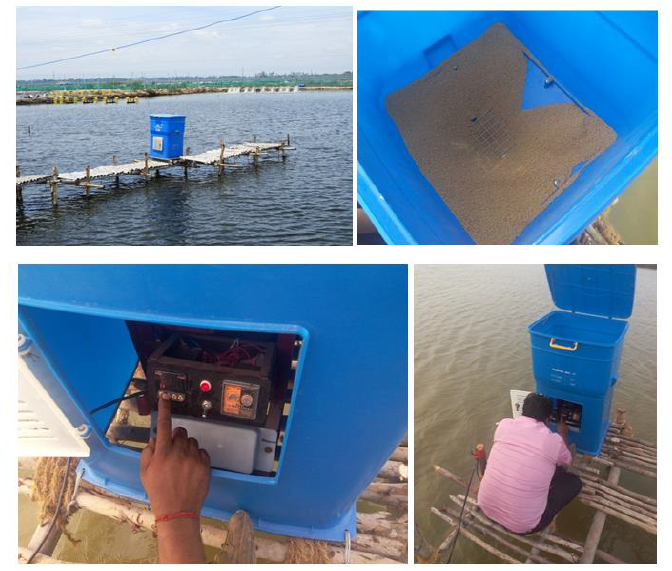A comparative study on the shrimp culture practices of Litopenaeus vannamei with automatic feeder and boat feeding technique along Karaikal region
DOI:
https://doi.org/10.17762/sfs.v7i3.102Abstract
In seafood shrimp is given importance by several people around the world. Shrimp yield can be enlarged by applying recent modern farming techniques, it includes the strengthening of culture operation through regularise of their size, stocking density, aeration and formulation of the feed. If the shrimp is not consumed the feed properly, it leads to weakening the water and soil quality. So, using auto feeder which allows the shrimp farmers to feed in lesser quantity, more recurrent, and maintain the sanitation of pond. The present study was aimed to compare shrimp growth performance in culture ponds using automatic feeder and boat feeding ponds. The experiment was conducted from July to November 2016, in raja aqua farm, Karaikal. Two ponds (A and B) were assigned for the growth analysis. Each pond size is 4 ha area. Pond A selected for the evaluating the shrimp growth using automatic feeder and pond B using normal boat feeding technique. The final weight, feed intake, daily and total weight gain, and production yield increased for higher feed level, regardless the feeding period. Automatic feeder used pond showed the highest weight gain, FCR was very good compare to boat feeding pond. During culture period pond A showed the better FCR (1.2) and good growth ( 35grms). The suvival compare to Pond B , the pond A showed 2 percent higher. The total feed used in pond A is 5376kg and pond B is 6365 kg. the normal daily weight gain resulted in pond A and B is 0.25 and 0.20grams respectively. This study confirming that using auto feeder helped to increase shrimp growth rate and make shrimp healthier by living in the high water quality and were continuously fed. And also reduces risks from disease infections. This system has proved to have minimized feed and labour costs and thus maximizing profits for farmers.










